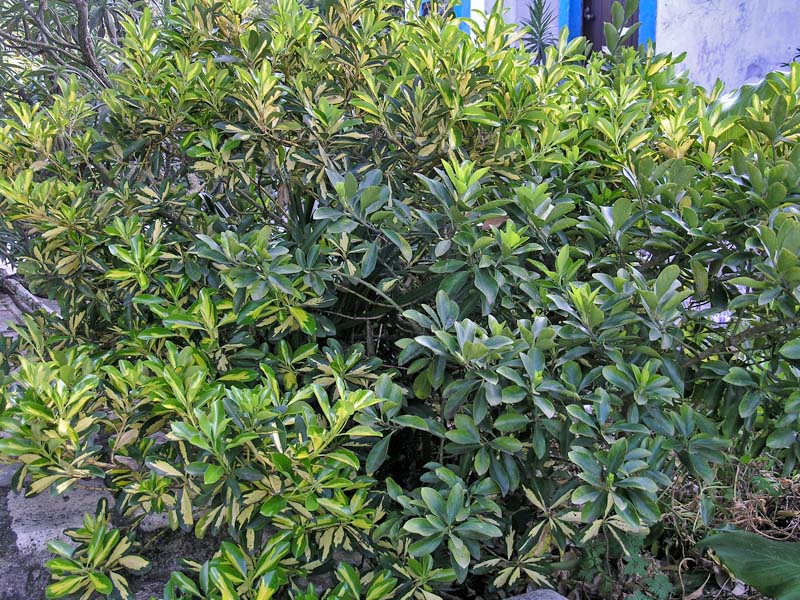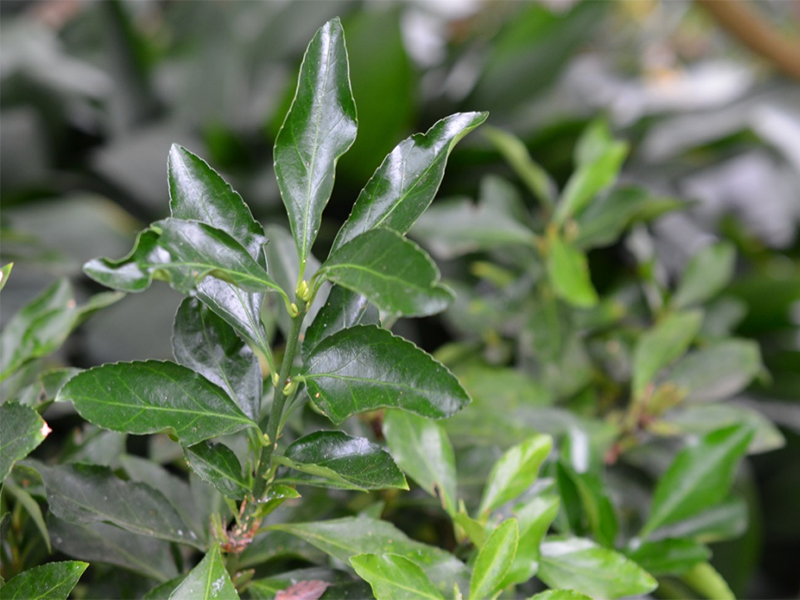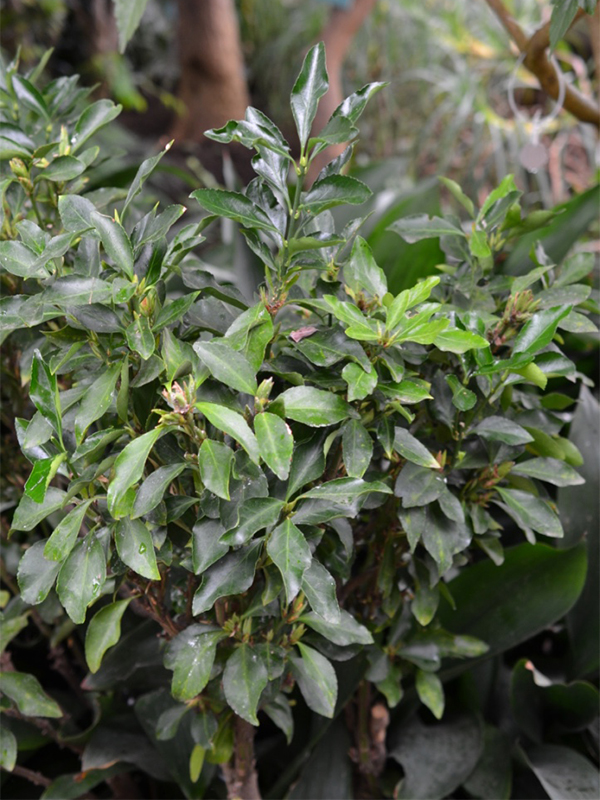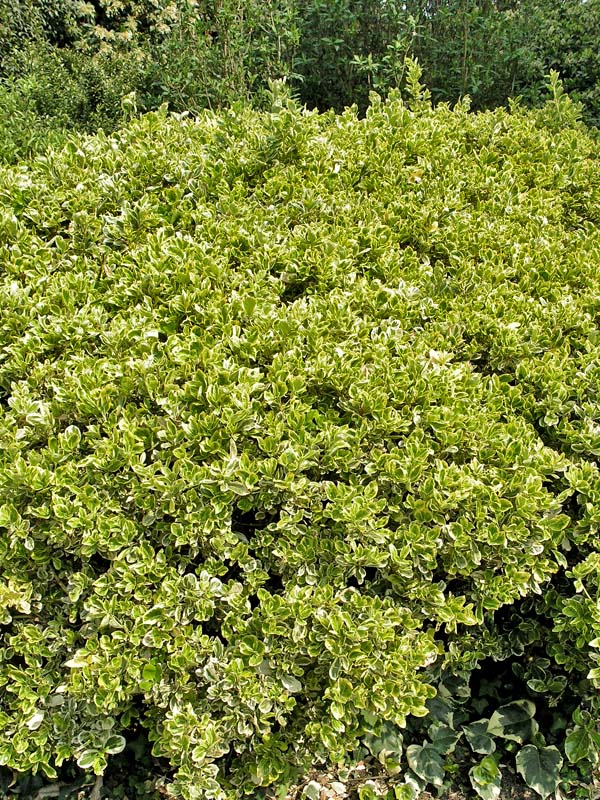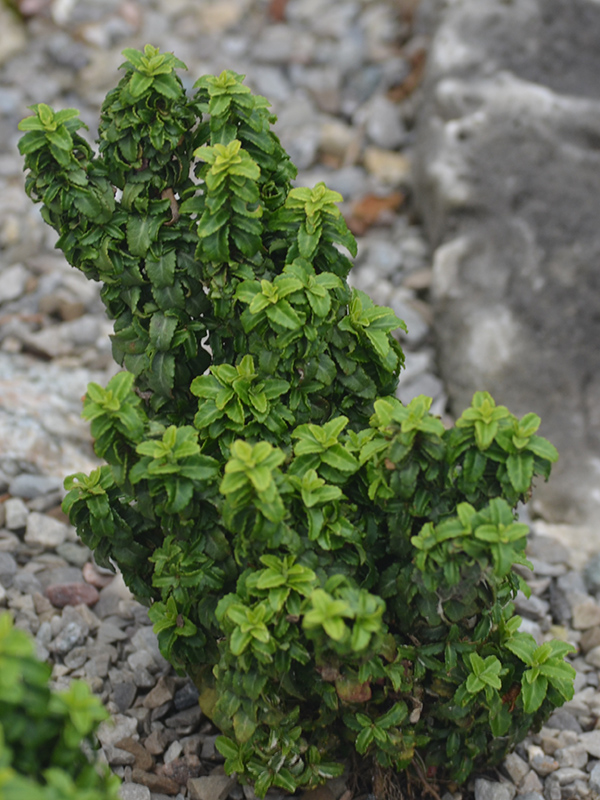
Woody > Euonymus > Euonymus japonicus > Euonymus japonicus
Euonymus japonicus
Japanese Spindle Tree
Origin: Japan, Korea and China.
Mike's
Opinion


"
Euonymus japonicus is a dense, rounded shrub native to Japan, Korea and China. The leaves of this shrub are a deep, waxy green, with bright pink fruit and clusters of white flowers give it a wonderful ornamental value. Able to grow in a wide range of temperatures, 2-8 m in height and 2-4 m wide, making it suitable as a hedge or a screen. Eating the leaves of this shrub is not wise as it is allegedly poisonous and is said to cause stomach problems if ingested.
Michael Pascoe, NDP., ODH., CLT., MSc. (Plant Conservation)
"
| Family |
| Celastraceae |
| Genus |
| Euonymus |
| Species |
| japonicus |
| Category |
| Woody |
| Type |
| Shrub (evergreen) |
| Pronunciation |
| USDA Hardiness Zone |
| 7 - 10 |
| Canadian Hardiness Zone |
| Requires cool season protection under glass. |
| RHS Hardiness Zone |
| H2 - H6 |
| Temperature (°C) |
| -18 - 4 |
| Temperature (°F) |
| 0 - 40 |
| Height |
| 2 - 8 m |
| Spread |
| 2 - 4 m |
Photographs
Description and Growing Information
Flowering Period
| General Description |
| A dense shrub, its foliage and fruit proves to be appealing to the eye. |
| Landscape |
| Used as an ornamental, hedge or screen. |
| Cultivation |
| It is salt tolerant, but prefers a medium-textured soil with medium fertility and good drainage. An abundance of organic matter in the soil is preferred, and plants that are established should be fertilized every 3-4 months. |
| Shape |
| This shrub is oval to rounded in shape, with a spherical crown and dense foliage. |
| Growth |
| Fast |
| Pests |
| Scale, silk leaf boxwood larvae and crown gall. |
| Habitat |
| Scrubland, forest borders and wastelands. |
| Bark/Stem Description |
| The bark is glabrous and appears to be wrinkled when the plant is dry. |
| Flower/Leaf Bud Description |
| The buds are imbricated and conical. |
| Leaf Description |
| Leaves are serrulate, and are placed opposite on the stem. They can be obovate or narrowly elliptic and are 3 - 6 cm long and 2 - 3 cm wide. |
| Flower Description |
| The flowers are inconspicuous, appearing in clusters, each bloom carrying 4 petals. They are 6 - 10 mm in length, and are arranged in an axillary pattern. |
| Fruit Description |
| The fruit is globose in shape, 4 celled, and approximately 1 cm in diameter. |
| Colour Description |
| Bark is green. Buds are green, but will develop into a red colour in autumn. Foliage is a waxy, deep green, turning yellow in the spring. Dark pink fruit with orange pulp. Flowers are white. Seeds are brown to orange. |
| Texture Description |
| Medium, leaves a leathery texture. Bark is smooth. |
| Notable Specimens |
| Centennial Conservatory, Thunder Bay, Ontario, Canada. |
| Propagation |
| It can be propagated by seed but is most often propagated by cuttings. |
| Ethnobotanical Uses (Disclaimer) |
| Lumber is used for manufacturing skewers and pegs. The wood is also used as charcoal by artists when the stem is undeveloped and soft. Allegedly poisonous causing stomach issues if ingested. |
